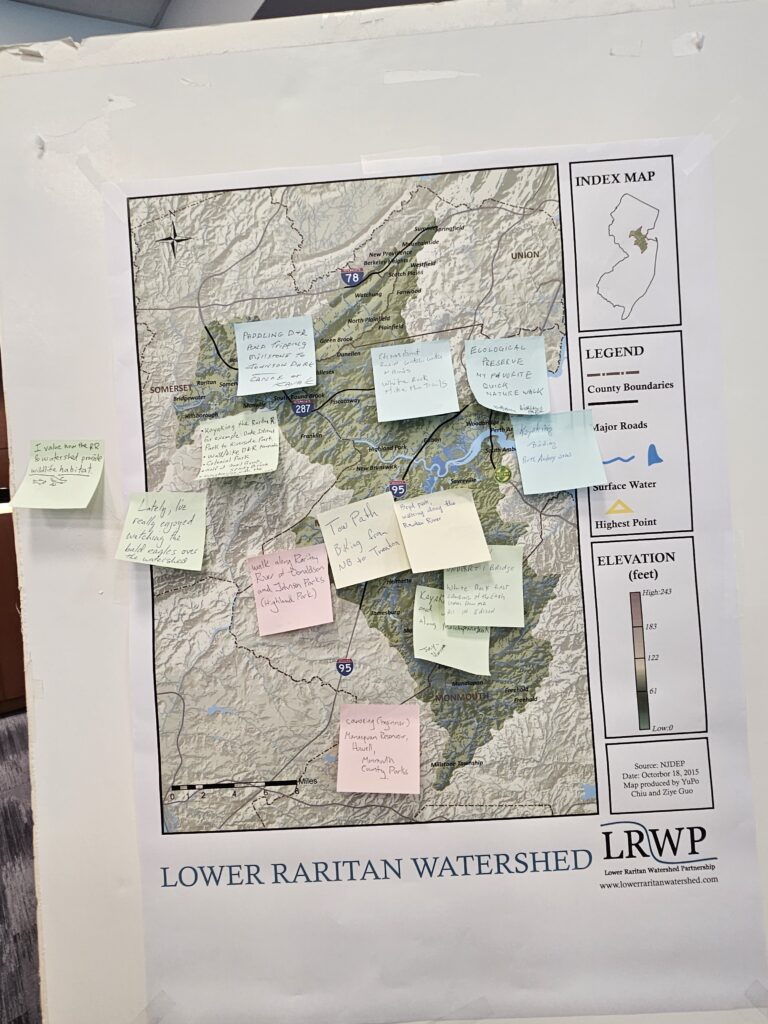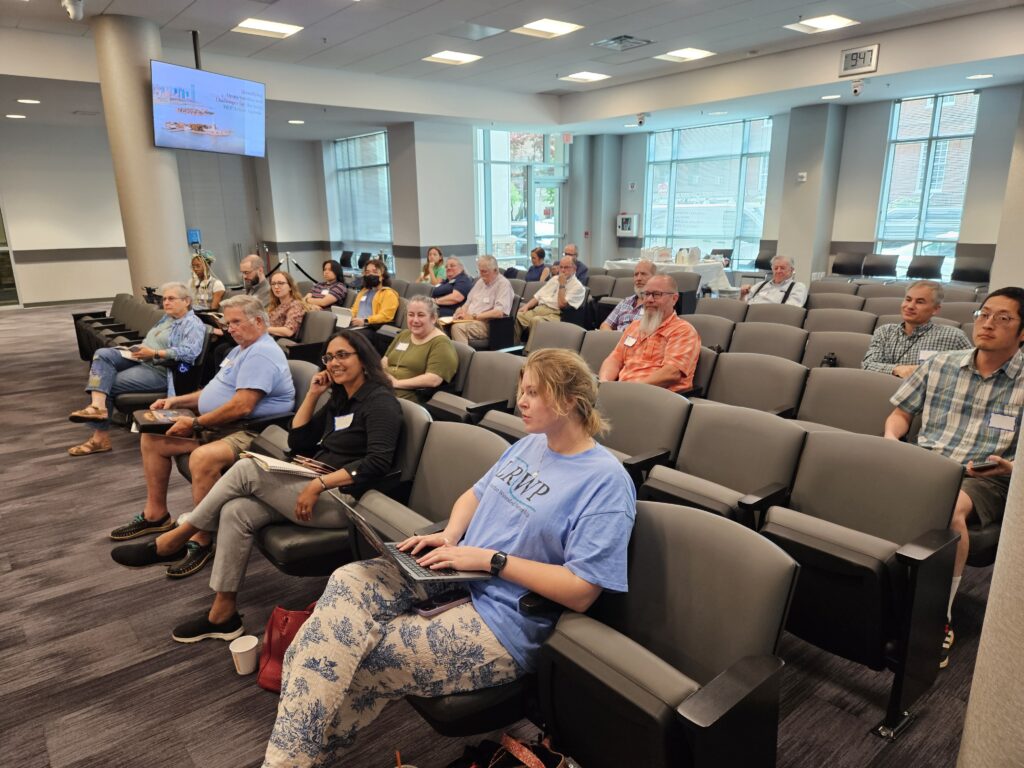Voice Your Vision: Planning for Recreational Access to the Raritan River
By LRWP Summer 2024 Research Intern Maya Fenyk
Yesterday, at a special listening session on recreational access to blue and green spaces within the Lower Raritan Watershed, one watershed resident shared their favorite way to access nature: “Lately, I’ve really enjoyed watching the bald eagles over the River.” Even 20 years ago, the idea that bald eagles could be a regular facet of our highly industrialized central New Jersey environment would have sounded like a fever dream, and now it is reality. During the June 11, 2024 listening session, hosted by the Lower Raritan Watershed Partnership (LRWP) and NY/NJ Harbor & Estuary Program (HEP), participants communicated a vision for the next 20 years: a robust network of blueways and greenways connecting local parkland and foot and bike paths within the Lower Raritan Watershed to larger regional and national networks of trails.

The input from this session, summarized below, will not only inform the LRWP’s understanding of recreational priorities but also help shape the HEP Action Agenda for recreation in our region for the next decade and beyond. The session was attended by 31 community members who contributed thoughts on recreational access and the larger state of the watershed. A recording of the session will be available on the LRWP youtube channel, and a bulleted summary of community member responses to a set of questions framed by HEP, is shared here:

Key takeaways can be summarized in response to two questions. The first, “If you could pick one change that’s necessary to have a greener, healthier, and more resilient community — what would that be?” and the second, “What are the challenges and obstacles that face local communities connection and access to nature?”
To the first question regarding required changes to realize a greener, healthier, more resilient community, participants communicated six core visions:
23% of respondents advocated for a shift towards environmentally centered leadership, policy, and planning, emphasizing the urgent need for eco-conscious governance.
23% of respondents voiced their desire for increased access to natural features, highlighting the intrinsic connection between human well-being and proximity to nature.
23% of respondents emphasized the critical role of environmental education, advocating for initiatives to raise awareness and empower communities to become stewards of their surroundings.
15% of participants underscored the importance of enhancing habitat connectivity, recognizing the significance of preserving ecological corridors for biodiversity and ecosystem resilience.
8% of respondents pinpointed increased funding as the key catalyst for change in the Lower Raritan Watershed, emphasizing the tangible impact of financial investment in environmental initiatives.
8% advocated for granting rights — akin to human rights — to the Raritan River, signaling a growing movement towards recognizing the intrinsic rights of natural entities.
To the second question regarding challenges and obstacles to realizing this vision, central concerns focused on infrastructure, transportation, and habitat fragmentation.
One participant highlighted how infrastructure like Route 18 acts as a formidable barrier, impeding access to many natural areas. Others pointed to lost opportunities for retrofits that could remedy past disconnections to natural spaces through, e.g. reengineering roadways or repairs of Landing Lane Bridge. As was noted in our session, the construction of Route 18 started as a slum clearing project. This reflects a historical pattern of social injustices where urban planning decisions disregarded not only the environmental impacts but also equity impacts on our communities, and highlights the need for a holistic approach to restoring community health. By acknowledging the historical context of such projects and their environmental implications, we can work towards more equitable and environmentally responsible solutions for our communities.
Limited mass transit connections to green/blue spaces was another concern voiced by participants, with suggestions made to not only prioritize transportation between live-work activities, but also to open and natural spaces. Addressing these challenges requires advocacy for infrastructure improvements, such as championing Boyd Park’s transformation into a state park, as suggested by community members at the session yesterday.
Additional questions included:
- Do you wish you had more and/or different opportunities to experience the natural environment?
- What kind of opportunities come to mind?
- What are other concerns or stressors that your community is currently facing?
- How has climate change impacted your community?
- Are there places/sites in your community where these concerns are more prevalent?
We invite you to read through the full set of ideas generated during the community engagement session (see above), to watch the video of the session, and welcome your thoughts on how to improve recreational access to blue and green spaces within the Lower Raritan Watershed and beyond.
Although the information in this document has been funded wholly or in part by the United States
Environmental Protection Agency under agreement to the Hudson River Foundation for the
New York-New Jersey Harbor & Estuary Program, it has not undergone the Agency’s
publications review process and therefore, may not necessarily reflect the views of the Agency,
and no official endorsement should be inferred. The viewpoints expressed here do not
necessarily represent the belief or opinions of the New York-New Jersey Harbor & Estuary
Program, Hudson River Foundation, or United States Environmental Protection Agency. They
assume no responsibility or liability for the contents or use of the information herein nor does
mention of trade names, commercial products, or causes constitute endorsement or
recommendation for use.
